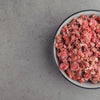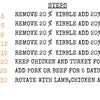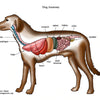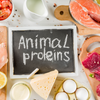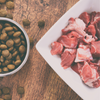Transition to barf and feeding guide
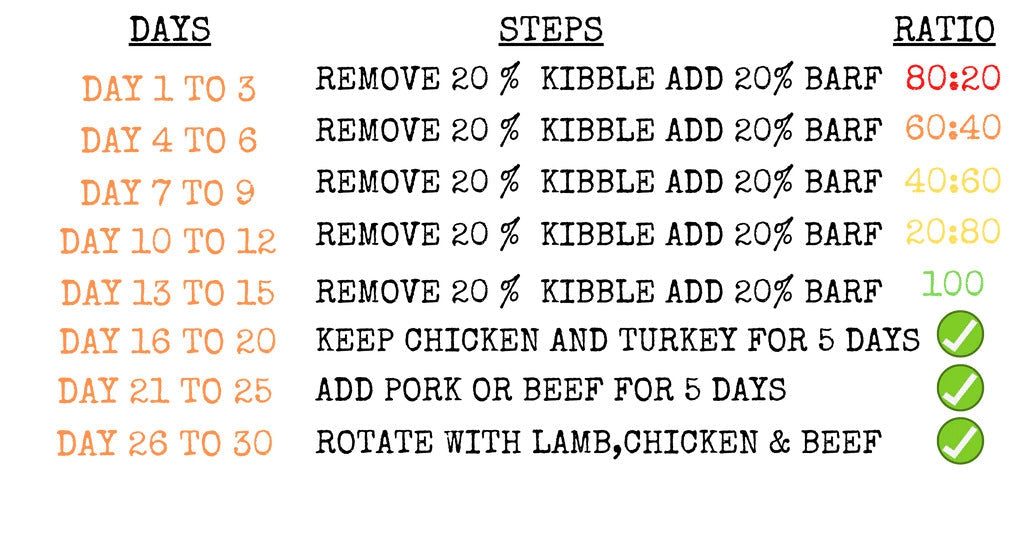
The protein and fats are very different components in the kibble diet from the raw fresh food diet. Kibble dog food is high in carbs, very minimum moisture, poor protein ratio and low-quality fat. Where BARF raw diet is a High-quality Protein source, high in moisture, low to negligible carbs and a decent amount of healthy Fat. Sudden changes in diet can cause some digestive issues in dogs. For example when you eat at McDonald's every day for lunch and all of sudden you are diagnosed with high cholesterol so you start packing sandwiches from home with salad. So it will give you some discomfort in the beginning but once you adopt a healthy lifestyle it is going to be routine as the same thing happens with dogs.
THIS IS JUST FOR YOUR KNOWLEDGE AND FEEL FREE TO CHANGE ACCORDING TO YOUR CHOICE. NO SET RULE TO FOLLOW THIS STRUCTURE
On day 1. Remove 20% kibble or processed food and add 20% barf diet (chicken it's the best option).
Now gradually increase and fully make the transition in 7-24 days depending upon the sensitivity of your dog.
At the beginning of 1 month gradually provide white meat like chicken and slowly add beef, pork and lamb to the formula.
As we suggest, get chicken for 1st month and then get our 5 variety complete Diet from then. You can select a meat option according to your dog’s demand. Some dogs prefer red meat over white meat.
How much you should feed your dog?
There is no exact answer as food needs are based on size, energy level, age and other health conditions.
An average adult dog needs 2% of body weight in one full meal/day so it will secret gastric juice properly and do metabolism process properly.
Puppy need 5-7 % of their body weight in 4 small meals/day.
Senior dog need 1-2% of their body weight as activity level reduces with age.


